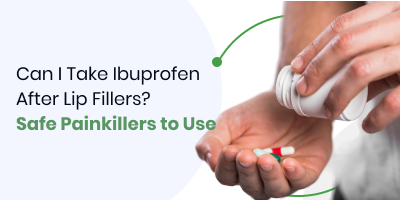
Contents
If you’ve recently had a lip filler procedure and are wondering about pain relief, you’re not alone. Many patients experience mild to moderate discomfort after getting their lips done, and it’s completely normal to seek guidance on the right medication to take.
But before you reach for ibuprofen or any other over-the-counter solution, let’s unpack the safest ways to handle post-filler pain while maintaining natural looking results. Remember that the key to a smooth healing process is following professional lip filler aftercare instructions and staying informed about possible risk factors.
A direct supplier of dermal fillers often provides products that ensure high quality, but the responsibility for proper treatment doesn’t end once you leave the clinic. Because lips directly react to slight changes in blood flow and external factors such as high temperatures or sun exposure, extra caution is needed.
Choosing painkillers after a lip filler appointment is a common concern. Some people automatically turn to ibuprofen, but its blood-thinning properties can increase blood flow and contribute to bruising. Mild discomfort can frequently be managed by safer options that don’t carry the same risk of bleeding.
Your lip filler treatment results greatly depend on how well you handle post treatment care. Even if the procedure was smooth, ignoring recommended steps can lead to risk of infection or other complications. Proper lip filler aftercare is not just a marketing slogan – it’s a critical component of overall success.
Additionally, be mindful of herbal supplements like ginkgo biloba or certain teas, because they can act as mild blood thinners. This is particularly important if you opted for hyaluronic acid fillers, which are designed to adapt well to your tissue but still need a stable environment to deliver the best results.
After receiving lip filler injections, it’s normal to experience some soreness and mild swelling. How long does it last? Typically:
Though discomfort is common, severe pain or discolouration may hint at an underlying infection or vascular compromise. Keep an eye on any sudden changes, as the vessels in your lips are easily affected by changes in blood flow or pressure. If in doubt, get professional advice immediately.
It’s essential to be strategic about your choice of medication following lip injections. Many over-the-counter drugs can help with pain, but some come with an added risk of bruising. Maintaining stable function is pivotal, especially right after your treatment.
Lastly, watch out for vitamin E supplements immediately after a filler procedure, because these can act similarly to blood thinners. Whenever possible, consult your medical director to ensure you’re on the right track.
Every dermal filler brand works slightly differently, but the fundamental principle is that each treatment adds volume beneath the surface of your lips. Dermal filler products like hyaluronic acid integrate well with your tissues, but the procedure can still cause mild trauma. It’s vital to understand what’s normal and what might be problematic.
Sometimes, combining chemical peels or other cosmetic procedures too close to your lip filler treatment can prolong the healing process. For best results, space out your procedures to give your lips ample time to recover.
Even the best-executed treatment can have occasional complications. While many patients breeze through with just minimal soreness, a small percentage might experience issues. Don’t hesitate to reach out if you suspect anything abnormal.
If a patch of your lips turns dark, white, or develops a bluish tint, it could be a sign of vascular compromise — meaning circulation in that area may be restricted. This should be treated as urgent to prevent serious complications.
Some swelling is completely normal in the first couple of days, especially around delicate areas like the lips. But if the swelling worsens after 72 hours or spreads significantly, it’s worth checking in with your doctor to rule out allergic reaction.
Small lumps can be a part of the healing process, but persistent or painful nodules that don’t improve within two weeks may signal an issue. You might need to have the area assessed to determine whether further treatment is necessary.
A mild fever in the first 24 hours can sometimes happen due to your body’s response to treatment. However, a sustained or rising temperature beyond that window might indicate infection, and you should consult a medical professional promptly.
A golden rule is to avoid touching your new lips excessively. Apart from that:
To stay on the safe side during the post treatment, wear sunscreen if you must go outdoors, as sun exposure can stress the newly treated area and compromise results. Remember to drink plenty of water and opt for easy to eat foods so you’re not pulling or stretching the lips too much.